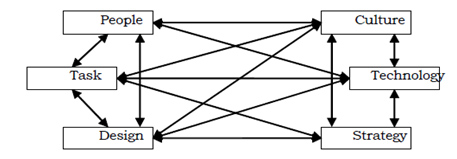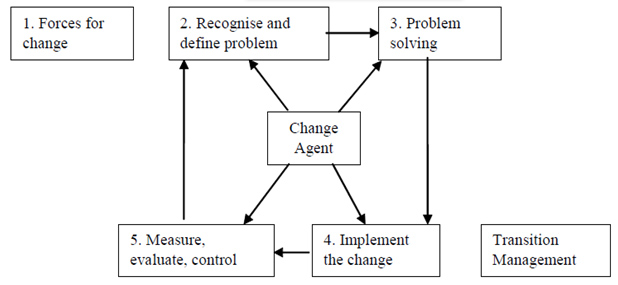Creating Sustainable Change – How to create and sustain change?
April 3, 2025
 Creating Sustainable Change – How to create and sustain change?
Creating Sustainable Change – How to create and sustain change?
Who doesn’t like change and who doesn’t want to change? These are certainly truisms in the 21st century landscape where businesses proclaim their commitment to change and exhort their employees to “Be the change you want to see”. However, having a vision and mission statement that commits to change is different from actualizing the change.…
 Why Some Organizations are Better at Driving Change ?
Why Some Organizations are Better at Driving Change ?
We live in a world where increasing complexity is the order of the day and the business landscape is characterized by a rapid turnover of companies which find themselves dethroned from their position because of outmoded thinking or anachronistic strategies. For instance, Nokia and RIM (the maker of Blackberry) were at the top of the…
 Contingency Model of Change Management: Dunphy and Stace’s Model of Change
Contingency Model of Change Management: Dunphy and Stace’s Model of Change
The contingency model is an extended version of Lewin’s three step in which Dunphy and Stace (1988, 1992 and 1993), explained the process of change from the transformational organization perspective. Dunphy and Stace (1993), put forth a situational or contingency model of change, which emphasized on the fact that organizations should vary their change strategies…
The Systems Model of Change or Organization-Wide Change lays more emphasis on the fact that a change must be implemented organization-wide instead of implementing it in piecemeal.
This model provides a whole new dimension to the concept of organizational change and describes the role played by six interconnected or interdependent variables like people, task, strategy, culture, technology and design.
All these 6 variables are the key focus of planned change. The model has been represented in the diagram below:

Strategic Planning involves identification of existing resources, a careful assessment of internal strengths and weaknesses, identifying the opportunities in the environment and threats as well for a competitive advantage.
All the six variables as per the Systems Model of Organizational Change are interrelated and interdependent. A change in a single variable will result in the one or more variables.
For example, a change in the organization’s strategy will lead to a change in the organizational structure, devolution of power and authority. This will ultimately be having an affect on the people of the organization in terms of changes in their behaviours or attitudes.
Moreover, organizational redesign may result in a cultural change by either modifying or reinforcing the existing culture.
The Systems Approach of Change Management is a useful model, which helps the managers or employees in understanding that a change can never be implemented partly, rather it must be wholistic in nature by taking into consideration all the interrelated variables and their influence on each other.
This Model of Change views the entire process of change from the top management perspective and considers change to be a continuous process. The Continuous Change process model is a more complex and a refined model than the Kurt Lewin’s Model of Change. This model equally covers Lewin’s concept of change during the Implementation stage.

Source: Armenakis et al., “Making change permanent: A model of institutionalising change interactions”, JAI press (1999).
According to this model, certain forces trigger a need for organizational change and the top management is involved in a problem solving and a decision making process for identifying the alternatives or solutions to the problems.
The top management clearly defines their goals or objectives, reforms in the processes or change in the output which is expected to be attained at the end of the process of change.
During the early stages of change management, the top management may seek the support of a change agent, who will be responsible for driving the entire change effort.
The change agent may help the management in identifying and defining the problems, or the change agent may also help in generating the alternative plans of action or solutions to the problem.
The change agent may be an insider, or an outsider, may be an external consultant or a representative from the Head Quarter who might not be known to the employees of the organization experiencing the process of change.
With the direction and guidance of a Change agent, an organization administers the change by following the Lewin’s process of Unfreezing, Change and Refreezing.
Measurement, evaluation and control is the last step. During this stage, the change agent as well as the top management, evaluate the degree to which a change has been effectively implemented in an organization and how far it has yielded the desired outcomes.
The change agent may play the role of a “Collaborator” or a “Facilitator”, who works with the members of the organization in the direction of defining and resolving the problems.
The Change Agent works along with the individuals, groups, departments and various levels of management through the various phases of change process.
The Change agent implements new ideas and provides alternative approaches to the organizational members for dealing with the problems. During the phase of measurement, evaluation and control, the top management evaluates the effectiveness of change against the pre-defined indicators.
Transition Management is the process of systematically planning and implementing the change for transitioning an organization from its current state to a desirable futuristic state. The organization is neither in the old or the new stage once the entire process of change begins.
The process of transition management ensures that the business should continue while the change is taking place. The representatives of the management team act as the transition managers and coordinate in the process of change management along with the change agent.
During this period of transition, interim management structures or interim positions may be designed or created for ensuring proper control and continuity of business. Effective communication with all the key stakeholders play a crucial role in the entire process.
Your email address will not be published. Required fields are marked *